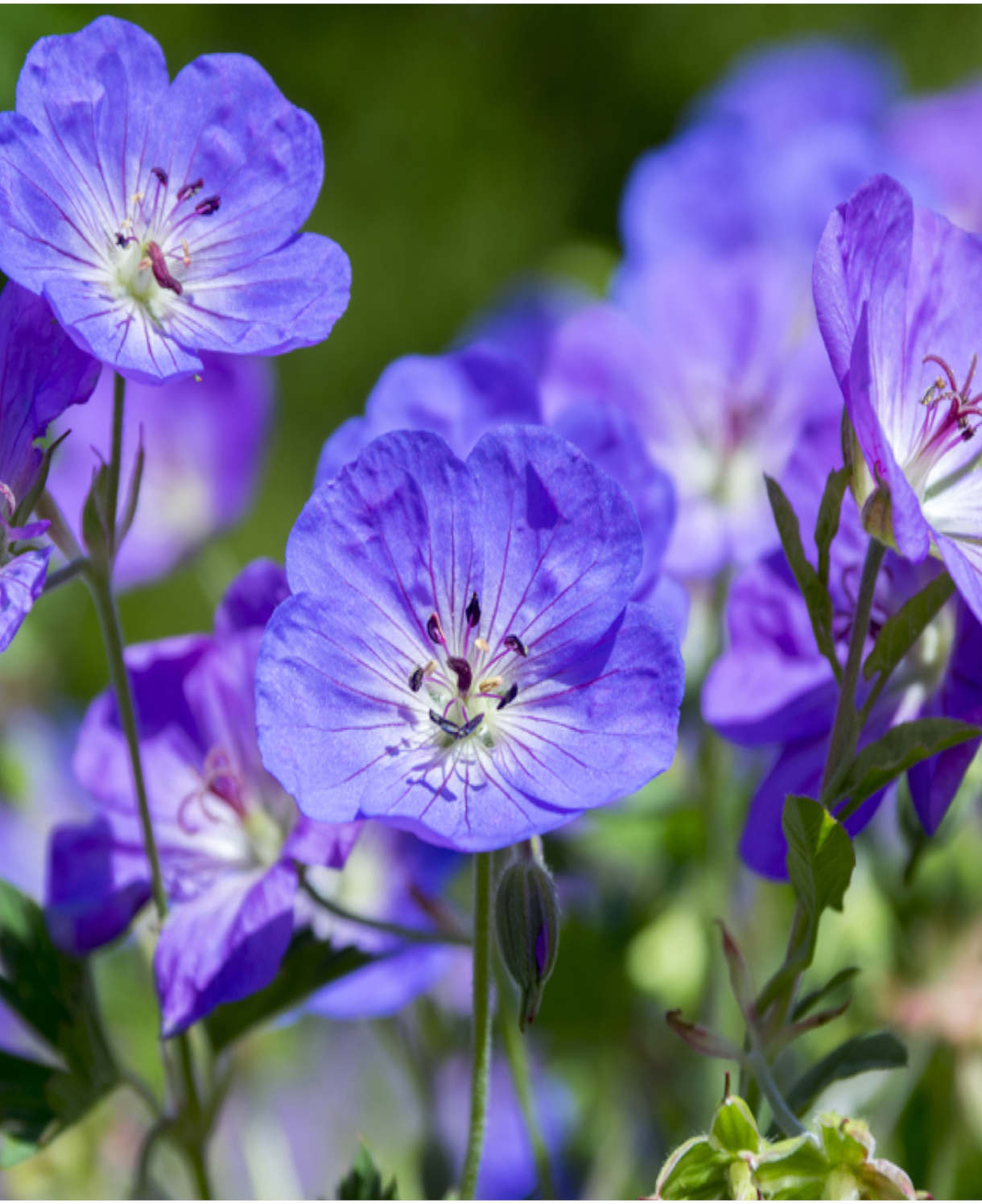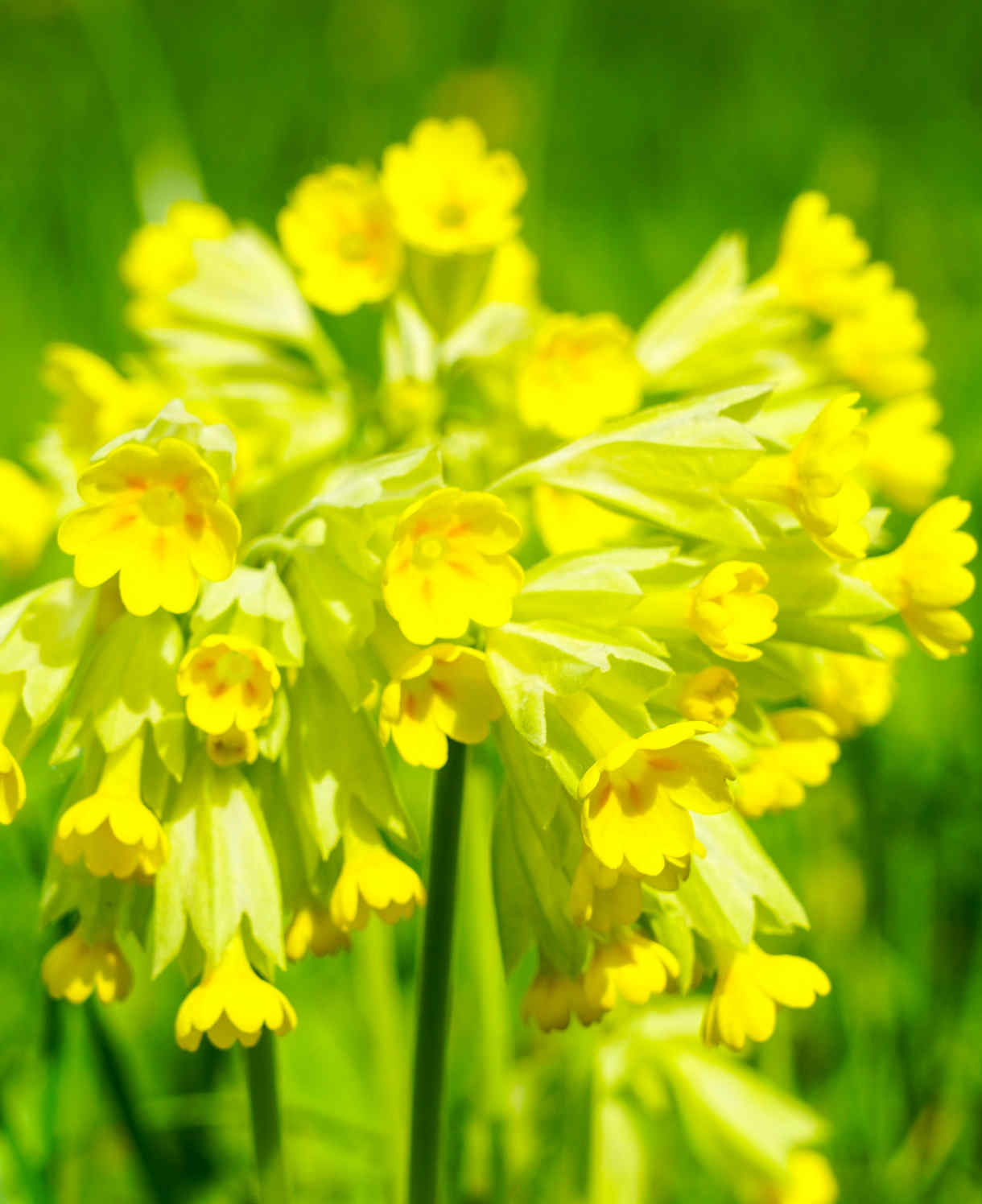How to grow Leucojum
Known commonly as the Giant Snowdrop, Leucojum is a welcome sight in the early spring garden. Leucojum are hardy, bulbous fragrant perennials that will reliably bloom every spring for years to come.
Each spring many wiry, hollow stems rise from amongst tufts of broad, grass-like foliage and hold several, pure, crisp, scented white bell-shaped flowers, each petal with an intricate marking. Looking much like a snowdrop in appearance but twice as tall with a later flowering time, the bold, tidy clumps are well-suited to planting in flower beds or in containers on your patio. You should expect to see your Leucojum grown to an approximate height of 30-60cm, depending on the variety, with an approximate spread of each individual bulb to 10cm.
Also known as the Summer Snowflake, perhaps because they bloom much longer than many other spring flowering bulbs, the flowers are produced for several weeks in mid to late to spring. Perfect for providing a good, welcome, early source of nectar for winter active and early waking bees.
With a long stalk up to 40cm tall, roughly twice as tall as the usual common Snowdrop, Leucojum make excellent cut flowers for your home, lasting up to 5 days in a vase, bouquet, or arrangement. Like Narcissus however, they produce an oozing sap when freshly cut which can be poisonous to other flowers. So, if they are to be part of a mixed floral arrangement, keep the freshly cut bunches in water for 24 hours to allow the sap to drain before adding them to another genus. Be careful not to cut the stems again as this will cause the sap to recommence oozing.
In the language of flowers Leucojum traditionally signify innocence, purity, hope and celebrates the memory of youth. The bulb contains an alkaloid called Galantamine, which has been a treatment towards Alzheimer's disease.
The name Leucojum comes from the Greek Leukos meaning shining white and ion meaning violet, possibly relating to the perfume, and they certainly live up to that name. Also known as the Loddon Lily, because they were once common in the Loddon Valley, Leucojum aestivum was announced as the county flower of Berkshire in 2002.

Key Information
Soil pH
Position
Hardiness


Where & when to plant Leucojum
Position Sun or part shade
Soil Moist, well-drained
Flowering Spring
Hardiness Hardy
Leucojum are best planted in autumn, into moderately fertile and moist but well-drained soil. If you are not ready to plant your Leucojum bulbs when you receive them, store in a cool, dry, well-ventilated place in temperatures between 4-20°C for a short while but be careful they do not dry out too much. Alternatively, you could plant them in moist compost in a seed tray until you are ready.
Leucojum are happy in sun or part shade. Not fussy on soil pH, in the wild, Leucojum grow at the edge of moist, shady woodlands, rich in leaf matter. If your soil is not rich, add some organic matter to increase moisture retention. However, the bulbs do not like soggy conditions.
How to plant Leucojum
If growing in containers, use good quality, multi-purpose compost.
Looking rather like mini onions, plant the bulbs pointed end up, in holes you have dug to around 10cm deep, then back fill with soil. For a naturalised look, plant in clumps or drifts by gently tossing a handful of bulbs onto the planting area and plant them where they fall, so long as they are around 15-20cm apart. Keep the soil moist but not waterlogged.
If growing in a container, use good quality multi-purpose compost and plant as above, although you can place the bulbs closer together, but make sure that they are not touching each other or the sides of the pot.

What to plant with Leucojum
A native perennial from Britain and Ireland, ideal companions for Leucojum are other woodland loving bulbs like Snowdrops, Winter Aconites, Primroses and Bluebells.
Long lived and well behaved, Leucojum will complement a wide range of other garden flowers whether in the garden or in a vase. Tulips and Narcissus are very popular and very successful,
Also happy in wildflower planting schemes or more formal gardens, another ideal perennial companion could be Pulmonaria Blue Ensign, where the white Leucojum blooms would flatter the blooms and also highlight the silvery markings on the foliage.
Trillium erectum or Dicentra spectabilis Valentine (Bleeding Hearts) love a similar environment and will accentuate the crispness of the blooms.
Leucojum are dormant in summer so summer blooming herbaceous plants will fill the gap that Leucojum leave. Geranium, Helenium or Penstemon interspersed with architectural Allium would be perfect, or alternatively Camassia esculenta Quamash would introduce a firework of star-shaped blooms.



How to care for Leucojum
Leucojum are a low-maintenance and easy to grow plant so do not require much care.
Water regularly during spring to keep the ground moist, especially during dry spells but in the summer months they do not mind being in moist or dry soil but avoid the ground becoming soggy or the bulbs may rot. Feeding is not generally required but an autumnal mulch with well-rotted compost, in preparation for the next season will improve the soil and help to control weeds.
After flowering, as with so many bulbs it is best to deadhead the flowers but leave the foliage in place to allow it to continue growing and photosynthesising, gathering nutrients and storing energy back in the bulb for next year’s growth. Leave it to die back naturally and turn yellow, any dead leaves can be removed once the plant has fully died down.
Leucojum create tidy clumps and are best left undisturbed to naturalised. However, if the clumps get too large, you can lift them and split them into sections in early summer once they have died back. You can then replant the smaller clumps elsewhere or given them to friends or neighbours.
It is possible to propagate Leucojum by offsets after the foliage has died down. Alternatively, propagate by seed sown in containers in a cold frame in autumn. These seed will need a cold period to germinate and can take up to 4-5 years to become mature enough to flowers.
How to propagate Leucojum
Leucojum will multiply freely, provided conditions are adequately moist. If after time clumps become too large for their allotted space, simply lift and divide after flowering.
- Gently lift out of the ground with a garden fork, taking care not to pierce any of the bulbs.
- Shake off any excess soil/ compost, and carefully tease bulbs apart by hand.
- Replant or pot where desired, as in our ‘How to plant leucojum’ section above.
Common Leucojum questions
- Is leucojum invasive?
While keen to multiply in the right conditions, leucojum is not considered invasive as its spread is easily restricted with the removal of unwanted bulbs.
How do you tell galanthus and leucojum apart?
Galanthus tends to be smaller, and the flowers are made up of three large outer petals and three small inner petals. Leucojum is usually bigger, and the flowers are made of six equally-sized petals.




